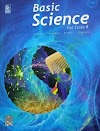Exercise
A. Answer the following in not more than 20 words.
1. Mention two causes of earthquakes other than movements of the tectonic places.
2. What is the point of origin of an earthquake called?
3. Mention the factors which determine the extent of damage due to an earthquake
4. What are Tsunamis?
5. Name two earthquake-prone regions of India.
B. Answer the following in not more than 40 words.
1. Write briefly about the ways in which buildings are protected from earthquakes.
2. What safety measures should one take id one is indoors during an earthquake?
C. Answer the following in not more than 100 words.
1. Explain how (most) earthquakes are caused.
2. Write briefly about the impact of earthquakes.
D. Fill in the blanks.
1. The blocks that make up the crust of the earth are called ................ plates.
2. The tectonic plates move continually on the .....................
3. The weak points on the earth's crust where earthquakes are likely to occur are called ...................
4. The instrument used to record earthquake is called a ...................
5. The magnitude of an earthquake is measured on the ............... scale.
6. The point on the surface directly above the seismic focus is called the ................
E. Choose the correct option in each of the following.
1. One of the most earthquake-prone zones in the world is the
(a) Pacific Cycle of fire
(b) Pacific Ring of fire
(c) Circum-Pacific Ring of Fire
(d) Trans-Pacific Ring of Fire
2. The intensity of an earthquake is measured on the
(a) modified Mercalli scale
(b) Richter scale
(c) seismic scale
(d) mercury
3. The energy of vibrations measured on the Richer scale increases by steps of about
(a) 10
(b) 20
(c) 30
(d) 40
4. During an earthquake one should
(a) use the lift to get out of the building one is in
(b) crawl under a table and cover one's head
(c) crouch near a window and protect one's head
(d) stand on the porch or balcony
5. Most of the damage caused during an earthquake is due to
(a) flood and fires
(b) the cracking open of the ground
(c) the collapse
(d) the destruction of roads and railways.
Answer
A. Answer the following in not more than 20 words.
1. Volcanic eruptions and human activities are other causes of earthquakes.
2. The point of origin of an earthquake is called the epicenter.
3. Magnitude, depth, distance from the epicenter, and building structures determine the extent of damage.
4. Tsunamis are large waves caused by the displacement of water due to earthquakes, volcanic eruptions, or landslides.
5. The Himalayan region and the northeastern region of India are earthquake-prone.
B. Answer the following in not more than 40 words.
1. Buildings can be protected from earthquakes by using shock-absorbing materials, base isolation systems, and proper structural design.
2. During an earthquake, one should take cover under a sturdy piece of furniture, stay away from windows, and avoid elevators.
C. Answer the following in not more than 100 words.
1. Earthquakes are primarily caused by the sudden release of energy from the earth's lithosphere due to the movement of tectonic plates. When two plates move past each other, they create friction, which results in stress buildup. When the stress becomes too much for the rock to bear, it ruptures, causing an earthquake.
2. Earthquakes can cause widespread destruction, including collapsing buildings, triggering landslides, causing tsunamis, and damaging infrastructure. They can also lead to loss of life, injuries, and psychological trauma.
D. Fill in the blanks.
1. The blocks that make up the crust of the earth are called tectonic plates.
2. The tectonic plates move continually on the asthenosphere.
3. The weak points on the earth's crust where earthquakes are likely to occur are called faults.
4. The instrument used to record an earthquake is called a seismograph.
5. The magnitude of an earthquake is measured on the Richter scale.
6. The point on the surface directly above the seismic focus is called the epicenter.
E. Choose the correct option in each of the following.
1. (c) Circum-Pacific Ring of Fire
2. (b) Richter scale
3. (a) 10
4. (b) crawl under a table and cover one's head
5. (c) the collapse










No comments:
Post a Comment